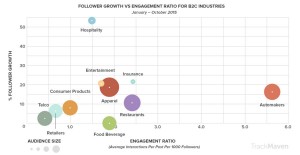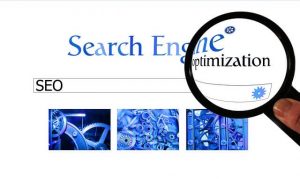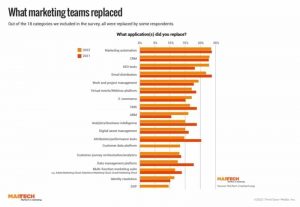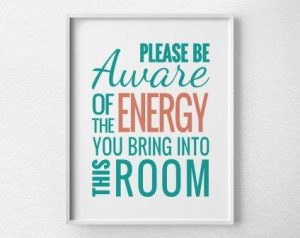We’re living in uncertain, life-altering times. As social distancing measures become more restrictive in order to slow the spread of the coronavirus (COVID-19), brick-and-mortar retailers are suffering from reduced demand or forced to close entirely. Simultaneously, consumers are relying more and more on ecommerce to purchase the goods they need to survive.

Via Inc.
You may be a small business owner that relied on foot traffic and store sales only, and now you’ve got to figure out how to get your products into customers’ hands when they can’t come into your physical storefront. That means you need a functional ecommerce site, and fast!
Given the circumstances, now is a great time to talk about the process of building an ecommerce website. First, we’ll talk about building an ecommerce website from scratch. Then, for those of you who already have a website, we’ll share some tips for adding basic ecommerce functionality to your existing site.
Let’s begin, so you can start selling again!
Building an ecommerce website from scratch
Right off the bat, I’m going to make two assumptions: (1) You know what you want to sell and (2) You know what you want your ecommerce business to be called. If that’s not the case, check out our guide to defining and targeting a niche and Shopify’s guide to naming your online store.
Step #1: Make sure your domain is available
Now, what you need to do is verify that your desired domain name is available. With a tool like Instant Domain Search, this step takes literally seconds. If the domain you want is available, that’s great! If not, browse the recommendations and select whichever one fits best. Of course, your selection shouldn’t be too similar to an existing domain, as this would likely lead to lost traffic (and revenue) down the line.
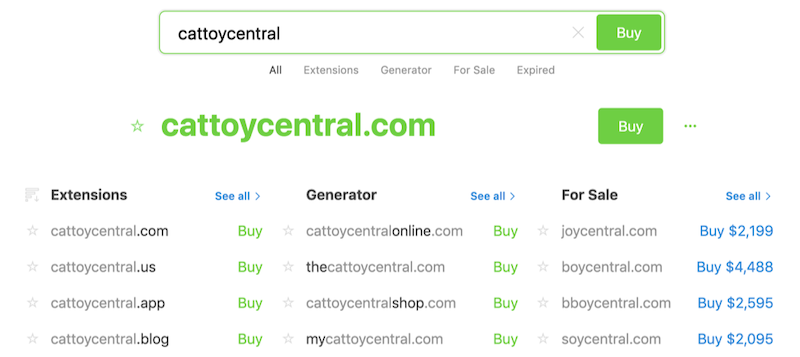
If you’re looking to sell cat toys, this one’s all yours.
Important note: When you settle on an available domain, hold off on buying it! If you plan to build your ecommerce website with a solution like Shopify, Squarespace, or WordPress, you’ll be able to buy your domain through the platform. Trust me—life is easier this way.
Why is checking domain availability the very first step? Because it will save you an enormous amount of time and frustration. Imagine if you began naming your products, drafting your web copy, and building your store only to realize that you’ve been optimizing for a name that isn’t available for purchase. Hard pass.
Step #2: Check out the search volume for products you want to sell
You should invest neither money nor time until you’re confident that there’s enough demand for your products in order for your ecommerce business to be profitable. I don’t care how good your products are or how persuasive your marketing is—if very few people are going online and looking for whatever it is you want to sell, you’re unlikely to find success. That’s why the second step to building an ecommerce website is using WordStream’s Free Keyword Tool to see how often consumers are using Google and Bing to search for your products.
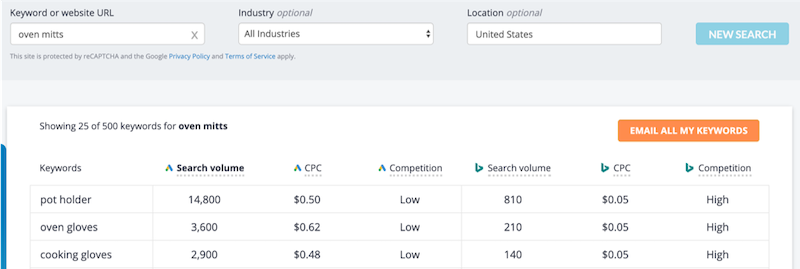
WordStream’s Free Keyword Tool in action.
This raises a crucial question: What does sufficient search volume (i.e., demand) look like? To answer that, we’ve got to do some math.
Let’s say you want to sell hand-crafted baseball gloves. You estimate that you can generate $ 20 of profit for every unit you sell. If you need to generate $ 10,000 of first-year profit to keep the dream alive, then you need to sell 500 gloves. At the outset, your goal is to drive half of those sales (250 units) through organic search marketing.
Now, assuming you can get yourself to page one of the search results (a difficult task—more on this later), you can expect a click-through rate of at least 3%. For the sake of the easy math, we’ll say you can expect to convert 5% of organic impressions into clicks. Of those clicks, you estimate that you can convert 2% into purchases. In order to sell 250 gloves, you’d need to drive 12,500 clicks per year (1,042 clicks per month). In order to drive 12,500 clicks per year, you’d need to generate 250,000 impressions per year (20,834 impressions per month).
So, in order to justify building an ecommerce website, you’d need to see enough search volume—across Google and Bing—to generate roughly 21,000 organic impressions per month.

On Google alone, these five keywords generate over 40,000 monthly searches in the US.
If that number intimidates you, I’ve got good news: Organic search is just one way to get consumers on your ecommerce website. Even if this channel only nets $ 3,000 of profit, you can still meet (or even exceed) your $ 10,000 goal by using paid search and paid social.
Important note: Even if you don’t plan to rely on organic search, it’s still imperative that your products drive sufficient search volume. For one thing, succeeding with paid search also requires solid search volume. Secondly, even if you plan to generate the majority of your sales through social media, search volume is a strong indicator of demand in general.
Which leads me to step three …
Step #3: Figure out how you’re going to grow
Available domain? Check. Sufficient search volume? Check. Now, we have one final step before actually building your ecommerce website: putting together an online marketing strategy. Before you start taking product photos and drafting an “About Us” page, you need to determine how you’re going to grow your online store.
So, let’s talk about the levers you can pull.
Organic search marketing (a.k.a. search engine optimization)
The goal of organic search marketing—also known as search engine optimization, or SEO—is fairly straightforward: When shoppers use Google or Bing to search for a product you sell, you want your website to appear in the first page of results. As you probably know from your own shopping experiences, websites that are buried past the first page are rarely visited.
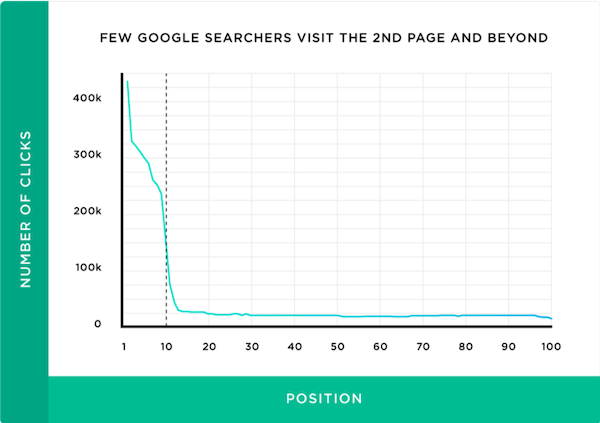
Via Backlinko.
I encourage you to check out WordStream’s guide to SEO for beginners. The basic idea is that you need to identify high-volume, low-competition keywords related to your business and target them throughout your website copy (while faithfully addressing user intent, that is). Additionally, it’s important that you maintain a logical site structure, earn backlinks from relevant publishers, and keep your page speed high.
Here are some of the advantages associated with SEO:
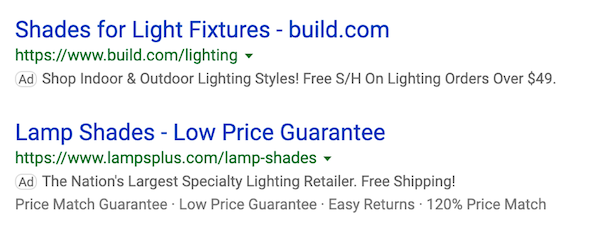
- It’s free—kind of. Whereas channels like Google Ads and Facebook Ads require you to pay for traffic, SEO is free. Keep in mind, however, that it takes a lot of time to see results. Plus, tools that help improve your SEO efforts—Moz, for example—cost money.
- It attracts high-quality prospects. SEO falls under the inbound marketing umbrella. You don’t need to go out and find shoppers; instead, the shoppers find you. Because these folks have purchase intent, they’re considered high-quality prospects.
- It drives a lot of clicks. As you’ll see in a minute, I’m a huge proponent of paid search advertising. That being said, the fact of the matter is that organic search results attract the vast majority of clicks.
Paid search advertising
Done right, organic search marketing will get your ecommerce website in front of high-quality prospects and attract a lot of traffic. But here’s the problem: That’s a long, labor-intensive process. I strongly encourage you to invest in SEO, but if you need results immediately, you need to open up at least one additional channel.
With paid search advertising—commonly referred to as PPC or pay per click—you can get your messaging in front of those high-quality prospects quickly. As with SEO, you’ll need to identify high-volume, low-competition keywords related to your business. But, instead of targeting those keywords in your web copy in hopes of ranking highly in the organic search results, you’re going to target them in your ad copy (and associated landing pages) in hopes of ranking highly in the paid search results—which are found both above and below the organic ones.
For further reading, I suggest our article on the basics of the PPC as well as the definitive guide to ecommerce PPC. In the meantime, here are some of the advantages associated with PPC:
- It drives results quickly. Once you’ve created your Google Ads and Microsoft Advertising accounts and your ads have been approved, you can start driving traffic to your ecommerce website—and making money—immediately.
- It attracts high-quality prospects. Like SEO, PPC falls under the inbound marketing umbrella. The most motivated shoppers will come to you.
- It scales very easily. Once you’ve collected some preliminary data and determined which keywords are most profitable, you can instantly increase and/or reallocate your budget and improve your results even further.
Paid social advertising
There’s one primary disadvantage across both organic and paid search: Search volume can dry up. This is the other side of the inbound marketing coin; as powerful as it is to capitalize on purchase intent, there’s no guarantee that demand will remain sufficiently high. As a result, it’s wise to give yourself some insurance. And that’s where paid social advertising comes in.
Paid social is the practice of buying ads on social media sites, such as Facebook and Instagram. Because these platforms have access to an enormous amount of user data, they enable their advertisers to target prospects with incredible precision. Depending on your marketing goals, you can pay per impression, per click, or even per video view. And as an ecommerce advertiser, you can engage in what’s known as social shopping—i.e., allowing social media users to browse and purchase your products without ever leaving the native platform. If you’re focused on maximizing conversion rates, it’s a dream come true!

A shoppable Facebook post. (I added the red squares.)
Make sure to check out the WordStream guides to advertising on Facebook, advertising on Instagram, and getting started with social shopping. But before you do that, here are three big advantages associated with paid social:
- It allows you to expand your prospect pool. Like I said: Inbound marketing, as terrific as it is, can leave you in a vulnerable position. To avoid getting blindsided by a drop in demand, use paid social to bring more prospects to the top of your funnel.
- It doesn’t cost much. Plain and simple: Clicks and conversions are cheaper on social than they are on search.
- It enables you to target people precisely. To be fair, Google Ads and Microsoft Advertising have dramatically improved their audience targeting capabilities over the past few years. Nonetheless, when it comes to getting the perfect ad in front of the perfect person, Facebook and Instagram remain on top.
Step #4: Build your ecommerce website
You’ve got the perfect domain picked out. Search volume is looking strong. You’re confident in the cross-platform marketing strategy you’ve drawn up. At last, the final step towards building your very own ecommerce website is …
… building your ecommerce website.
I know, I know—not terribly helpful. But, believe it or not, you’ve already conquered the most difficult steps. Combing through keywords, figuring out the nuances of different marketing channels—that is the hard stuff. In fact, if you ask me, you’re just now getting to the fun part. With the grunt work out of the way, actually putting together your ecommerce website is a blast.
So, let’s talk about what you need to do.
Pick an ecommerce solution
Search “ecommerce website builder” on Google and you’ll see a slew of ads and organic results from software companies and marketing agencies. Among the former are a handful of names you likely recognize: Shopify, BigCommerce, Squarespace, Wix, and WordPress.
Now, if we were talking about a website designed strictly for traffic and/or lead generation, I’d recommend WordPress—they’re the industry standard for a reason. But that’s not, in fact, what we’re here to talk about. You want to build an ecommerce website. Therefore, you should go with the solution that’s best for online retailers. And that, my friends, is Shopify.
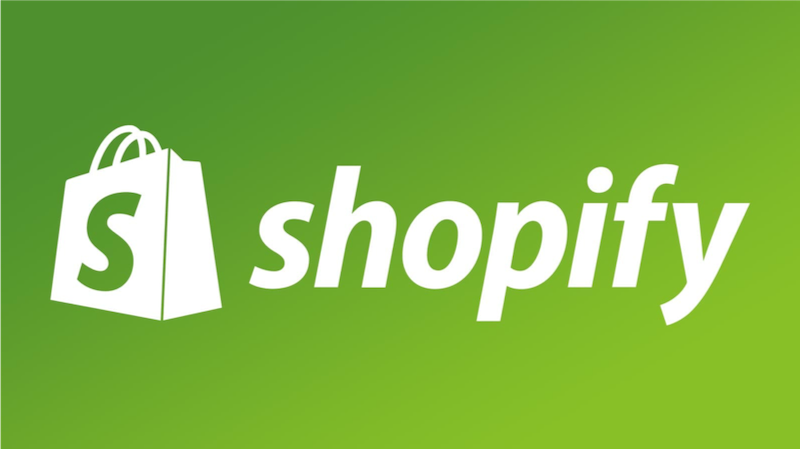
You can find plenty of in-depth testimonials that extol the wonders of Shopify; I’m not going to go into much detail today. I’ll simply leave you with this: If you’re looking for an intuitive, affordable, and reliable solution that enables you to sell not only through your own website, but through platforms like Facebook and Pinterest as well, go with Shopify.
Buy your domain
That domain you picked out earlier? Buy it. Whether you go with Shopify, WordPress, Squarespace, or some other solution, you’ll have the option to buy your domain through them. You can expect to pay somewhere around $ 20 or $ 30 per year.
Choose your theme
Once you’ve chosen your solution and purchased your domain, you’ll be tasked with selecting a theme for your ecommerce website. What’s most important is that your theme selection aligns with your industry and your desired brand image. If you’re in the world of fashion and you want to brand yourself as modern and cutting-edge, something sleek is probably most appropriate. Alternatively, if you’re in the home and garden industry and you want your website to feel as welcoming as possible, consider a theme based on bright, warm colors.
Assemble your product photos and descriptions
Product photos can be immensely powerful assets.When a prospective customer browses your website and sifts through your product photos, they’re able to envision themselves as your customer. If you sell women’s apparel, they can picture themselves wearing a certain dress. If you sell home goods, they can picture your vase sitting on their mantle. Moments like these, trivial as they may seem, can go a long way when it comes to winning over a new customer. Check out these 14 product photography tips that’ll make you look like a pro!

Gorgeous.
Product descriptions are also extremely important. Not only do they help you give prospects a clearer understanding of the value your products can deliver; they also help you improve your SEO. A product description is a golden opportunity to target the second- and third-tier keywords you couldn’t quite fit into your product title. For example, let’s say you’re building an ecommerce website to sell organic laundry detergent. One of your product titles may be something like this: “Bill’s Organic Laundry Detergent, Lavender, 64 OZ.” You’ve got your brand name, scent, and bottle size in there, but think of all the related keywords you can still target: all-natural, chemical-free, eco-friendly, and so on. Use your product description to their full potential!
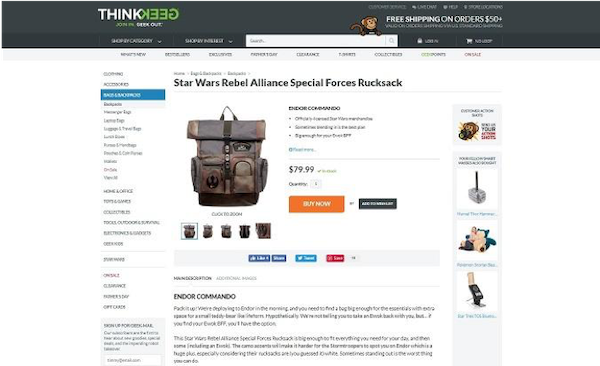
Set up the Facebook Pixel
Before you sell a single product, I strongly encourage you to install the Facebook Pixel—a small snippet of code that will allow you to track the actions your prospects take across your website. With the data your Pixel collects, you’ll be able to take your Facebook (and Instagram) ad campaigns to the next level.
Let’s return to the example of the baseball equipment website. Say you ran a successful Facebook campaign to promote a specific bat. Thanks to the Facebook Pixel, you can group together all the (anonymized) users who clicked on your ad and bought a bat. Now, you can retarget that audience of past buyers with an ad for a glove!
Bottom line: The Facebook Pixel will empower you with immensely valuable insights and allow you to get more revenue out of paid social.
Make sure payment processing is in place
With your perfect theme in place, your product photos and descriptions ready to knock prospects’ socks off, and the Facebook Pixel installed, there’s just one last step to getting your ecommerce website off the ground: verifying that you’re ready to process payments.
If you’ve created a Shopify website, all you need to do is turn on Shopify Payments; there’s no need for a third-party widget. With a solution like Squarespace or WordPress, you’ll have to connect your website to PayPal, Stripe, or both.
Now that you’re ready to sell, push your brand new ecommerce website live!
Adding ecommerce to an existing website
For those of you who already have a website, some would tell you to use a solution like Shopify or WordPress to quickly build a separate website that’s designed exclusively for ecommerce.
Not a good idea.
First of all, that means paying for two websites at the same time. I know that’s not a massive expense, but it’s an expense nonetheless. Secondly, as intuitive as some of these website solutions are, building a new website does take some time. Why waste a couple days doing something you don’t have to do?
Thirdly, and most importantly, redirecting customers from your main website to your ecommerce website makes for a bad user experience. Maybe your most dedicated customers are willing to tolerate something like that, but a lot of online shoppers are not. So, by building a separate site exclusively for ecommerce, you’re not only wasting time and effort, but you’re also throwing revenue directly out the window.
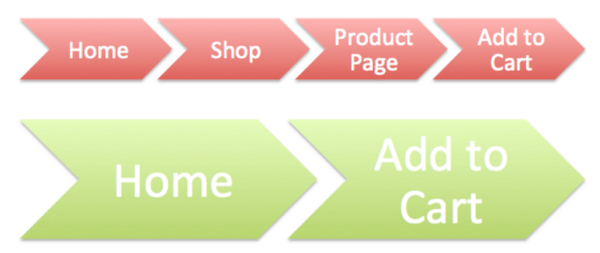
The easier it is to buy, the better.
What you need to do is add basic ecommerce functionality to your existing website. Let’s talk about the different ways you can do that.
See what your solution provider has to offer
If your existing website is managed through a platform like Squarespace, WordPress, or Wix, you’ve got some room to work. Squarespace Commerce, for example, is a suite of features that enable you to sell products, manage orders, and process credit card payments. Creating product pages is easy, and you’ve got some flexibility when it comes to shipping arrangements. Plus, you can easily boost sales by using some of Squarespace’s native marketing features, such as discount announcement bars and abandoned checkout recovery.
If your website runs on WordPress, I’ve got good news: WooCommerce, one of the most popular WordPress plugins, makes it easy to implement ecommerce functionality. Simply select “Plugins” from the left-side menu of your WordPress dashboard and then click “Add New.” Search for WooCommerce, install it, and allow Onboarding Wizard to show you how it’s done. Once you’re onboarded, you can start playing around with specific functionalities.
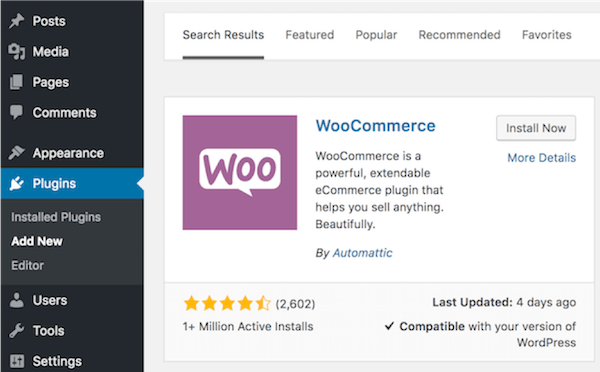
Via GoDaddy.
One final website solution I want to mention is Wix. Much like Squarespace, Wix makes it easy for their subscribers to upgrade to ecommerce-friendly plans. If you’re not already on a Business Premium subscription, you’ll have to make the switch (which comes with an increase in the price). Once that’s taken care of, simply select “Add” from your left-side menu and click “Store.” A new button labeled “My Stores” will now appear in your left-side menu. From there, you can start building and managing your Wix store!
Use a third-party ecommerce tool
If you don’t want to alter your website subscription—or if your website is constructed in a way that doesn’t allow you to make big, fundamental changes—you can use a third-party tool to add basic ecommerce functionality. Let’s look at a few of your options.
Shopify buy button
Designed with bloggers, artists, and side-hustlers in mind, the Shopify buy button allows you to sell products through your website without fully transitioning to an ecommerce model. No matter what kind of website you have, you can easily embed buy buttons within your homepage, your sidebar, or even throughout your content. If you’re looking for a fast, secure way to sell products while maintaining a high-quality user experience, this is a great option.

Shoprocket
For as little as $ 7/mo., Shoprocket allows you to sell across your website and Facebook page. Integrating seamlessly into your existing website, Shoprocket gives you a centralized platform for creating offers, managing orders, specifying shipping details, and more. Best of all, you can upgrade as you grow—giving you access to advanced features, such as Google Analytics tracking and live chat support.
Snipcart
Snipcart—which enables you to start selling products, downloads, and subscriptions with just two lines of code—is another way to add ecommerce to your website. In exchange for 2% of each sale, you get access to an intuitive platform that allows you to manage orders, track abandoned shopping carts, integrate with email marketing solutions, and more. If you’re looking for something that’s easy to implement and flexible enough to adapt to your changing demands, give Snipcart a look.
Start building your ecommerce website today!
Whether you’re a fledgling entrepreneur starting from scratch or an established retailer trying to improve your online presence, there’s no better time to start building your ecommerce website than today. No matter which ecommerce solution you want to use, no matter which marketing channels you want to explore, there are plenty of effective ways to reach your target audience.
But with the number of online retailers growing every day, the competition for that audience will only intensify going forward. That’s why it’s so important to get the ball rolling—whatever that means for you—as soon as you possibly can.
Happy selling!
Digital & Social Articles on Business 2 Community
(63)
